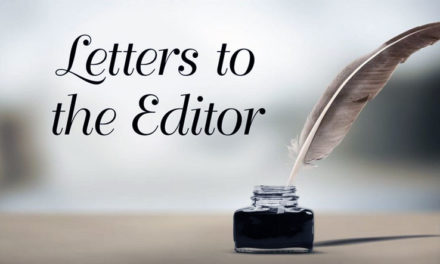
Colleen Dougherty
When the vet clinics opened back up for routine visits after COVID-19, I took two of my cats in and both had gained weight — one gained a whole pound!
“Have you changed their food?”
“No.”
But…like many, I teleworked during much of the pandemic, and being that I don’t sit still well, I got up from my desk frequently.
Every time I did, my cats would run to their empty food bowls expecting a treat, and I’d oblige with a few bits of kibble.
That wouldn’t have been a problem if it was once or twice a day, but ten or 20? It’s kind of funny now, but weight gain in our pets isn’t funny, or cute – it’s serious.
A report from Banfield Pet Hospital in 2020 called obesity in pets an “epidemic,” stating that over half the adult dogs seen in their hospitals in 2019 were overweight or obese.
For cats, statistics have risen from 33 percent in 2005 (DVM Best Practice publication) to nearly 60 percent today (Dr. Ernie Ward, Association for Pet Obesity Prevention.)
This issue is multifaceted, and raises a lot of questions.
What’s the difference between overweight and obese? How can I tell if my pet is affected?
What health issues does it cause? Are they the same as in people? How do animals become overweight?
What do I do about it?
First off, yes, the health risks are very much the same as in humans: heart disease, breathing problems, diabetes and other endocrine issues, arthritis, joint and ligament damage, decreased immune functions, back issues, urinary tract infections, and lameness or difficulty walking.
Aside from genetics or other health issues, animals gain weight just like we do: too much food, the wrong kinds of food, and not enough exercise.
(A note here: spaying or neutering will not cause your pet to get “fat!”)
To figure out if your pet is overweight, underweight, or just OK, there’s a chart called the BCS: Body Condition Score.
It’s similar to the human BMI or Body Mass Index scoring method, except it’s visual.
The BCS shows cats and dogs from a top view and a side view, and there are five categories of body condition:
Severely Underweight, where the animals’ bones are protruding and visible (ribs, hips, shoulder blades;)
Underweight, where there’s a little more padding but you can still count ribs without touching them;
Ideal, where you can feel a layer of fat over the bones, but still feel the bones;
Overweight, where ribs are palpable but excess fat exists on the waist and abdomen; and Obese, where the ribs are not palpable, the abdomen is rounded, and fat exists on the lower back, face, and limbs.
Another clue is the “abdominal tuck,” the curve where the stomach slants up higher than the rib cage. In emaciated animals the slant is severe, and in obese animals it’s gone — the side view looks like a loaf of bread.
The absolute worst thing a pet owner can do (besides ignore the problem) is resort to a “crash diet.” This can literally kill your pet.
Besides loss of muscle mass, pets (especially cats) can develop a potentially fatal liver condition and die.
Authors of the articles and reports I read recommended feeding foods with a balance of high protein and low carbs, looking up the recommended amounts on your dry and wet foods (you may just be overfeeding like I was!) and backing off really slowly (10-15 percent) on portions.
Dr. Ward advised that dogs should lose no more that 3 percent of their body weight per month, and cats only ½ to 2 percent. That’s 1.8 lbs for a 60 pound dog, and ¼ of a pound for a 12 pound cat.
They also advised paying attention to how many treats or table scraps our pets get daily, and slowly adding in some activity sessions, like a short walk with your dog or a five minute play session with your cat a couple of times a day.
For Trinket, I used zip seal bags to measure the food. When I ran out before day’s end I saw how much I was overfeeding.
I backed off slowly, and her “telepound” came off safely in about 6 months. Yes indeed, a little humor can help us diffuse the tension of tough situations — as long as we do the right thing in the end.
I’m so grateful to have this platform to share with you the things I learn, and I hope this was helpful.
As always, thanks for reading and be well!















